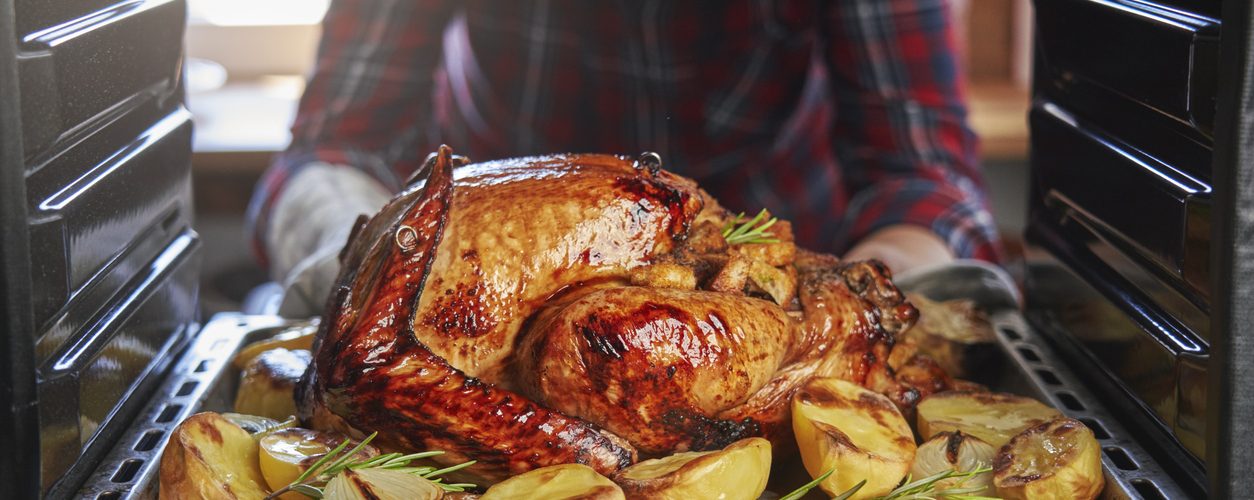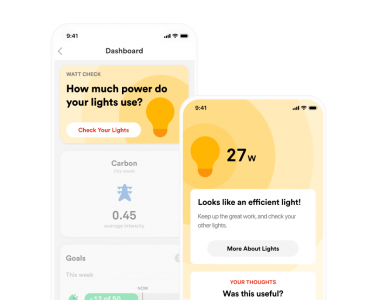With Thanksgiving right around the corner, now is a good time to clean up your kitchen’s energy wasters – and it’s just in time for Black Friday deals that make new appliances more affordable. In this article, we evaluate kitchen gadgets and how to lower energy costs when you’re in the kitchen.
We’ll compare cooking with air fryers, microwaves, toaster ovens, slow cookers, electric, gas and induction stoves and ovens, and we’ll discuss the best way to wash your dishes and keep your food cold in the fridge.
Choose microwave ovens for small portions
A study performed by Lawrence Berkely National Laboratories compared using a microwave oven to heat water for coffee and other food versus sticking with a gas or electric-powered cooking. For smaller portions, the microwave comes out way ahead in energy and cost savings, mostly. For instance, cooking potatoes in a microwave uses about 10%–25% of the energy used by a conventional oven. That’s a major savings, so turn to the microwave as often as you can.
Here are some of the study recommendations:
Limit the amount of food being reheated or cooked to the portion that will be consumed.
Always consider using a microwave oven rather than an electric or gas oven for smaller portions.
Think ahead and defrost in the refrigerator rather than in the microwave.
Don’t worry about which brand to purchase since the range of microwave efficiencies tends to be narrow.
Consider pulling the plug when your microwave is not in use for long periods to limit standby energy use.
Save energy with toaster ovens, air fryers and slow cookers
Countertop cookers like toaster ovens, air fryers and slow cookers can cut your kitchen energy costs substantially. They are more efficient simply because they heat up less space than a big oven and do it more efficiently. The way they cook differs, though, so choose the small cooker that matches your kitchen lifestyle.
Toaster ovens are ideal for small portions and they cook from the outside in, so they’re better than microwaves at keeping food crisp and, well, toasty. Energy Star studied the energy use of toaster ovens compared to gas or electric ovens. For heating small and medium food items, you can potentially save 50% of your energy by using an Energy Star toaster oven rather than an electric oven. Another point in favor of some toaster ovens: they generally use no energy when turned off.
Air fryers use convection for fast, efficient cooking and crisping. In a detailed analysis of energy costs, CNET found that the cost per hour of cooking for air fryers could be half that of an electric oven and about 38% lower than a gas oven, depending on your local utility’s rates. So pop those chicken nuggets into an air fryer rather than your oven to save energy and money.
Slow cookers are ideally suited for cooking cuts of meat a long time at low heats until they are fork tender, a technique known as braising. A typical slow cooker uses only 300 watts which makes them super efficient. Testing by CNET found that you can cook a meal for a fraction of the cost of an oven – getting as low as a tenth of the cost. For cooking stews or braising beef or lamb, you simply cannot beat the efficiency of a slow cooker.
Induction vs. gas vs electric stoves
Induction ranges are the buzzy new thing in kitchens, but how much more efficient are they than older methods? Independent tests show that they beat gas burners consistently but it’s a closer call with electric ranges.
The Electric Power Research Institute (EPRI) compared the energy use of induction cooktops to gas and electric ones. Advocates of induction cooktops claim an energy efficiency of 90%. The EPRI study measured energy efficiencies of around 75%, compared to 30-40% for gas cooktops and up to approximately 80% for electric burners.
It gets more interesting when you consider the size of your pans. Induction cooktops do better with small-volume pots and pans than larger ones. The study compared heating water to boiling using large (9.5-inch diameter) pots versus smaller (6-inch) ones. At full power, the two induction cooktops were about 77% efficient at boiling water in the larger vessel, compared to 83% for the electric cooktop and 35% for the gas burner. With the small vessel, the induction cooktop came out at about the same efficiency of approximately 77%, but it was 42% for the electric coil and 30% for the gas.
For large-volume cooking vessels, the electric coil cooktop was the most efficient while the induction cooktop was clearly the winner for heating water in a small vessel. One easy approach to getting savings from induction is to buy a compact induction cooktop, which retails for $70 to $130, and try it out for yourself.
Efficiency is a good measure of an appliance’s energy use, but your actual costs depend on what your utility charges for natural gas or electricity. EPRI compared the average cost of operating an induction, gas, and electric cooktop for a year, using average electricity and gas costs in 2014. They used small vessels for the comparison. For an electric cooktop, the annual operating expenses were about $15; for the gas burners, it was about $7; and for the induction cooktop, the average yearly cost was about $8.50.
Since gas and induction are close in cost, the tie breaker may come down to other factors, including the potential negative health impacts of natural gas in your home and the climate impacts of methane, a byproduct of natural gas production. As homes increasingly rely on electricity, and green energy sources like wind and solar become more prevalent on the grid, electrifying everything in your home will slow climate change.
The convection advantage
When it comes to bigger items, like roasting a whole turkey, you need the capacity of a full size oven. Most ovens have heating elements at the top and bottom to cook the food. A convection oven adds a fan and exhaust system that circulates hot air inside the oven. It may also have an additional heating element to help foods cook faster while the fan distributes the hot air evenly around the food.
The convection mode on your oven is ideal for roasting meats or baking pies more quickly and evenly than conventional ovens. Since they reduce cooking times by 25%, convection ovens save over conventional ovens, but you’ll need to adapt your favorite recipes for convection.
Dishwashers (Human and Non)
After the holiday dinner, when it’s time to clear the table, you can brag to your guests that your Energy Star dishwasher will save you nearly 4,000 gallons of water over its lifetime compared to a non-Energy Star model and only costs about $35 per year to operate.
Dishwasher efficiency has improved dramatically in the past decade. Standard-sized Energy Star dishwashers use only about 3 gallons per cycle, compared to twice that for standard dishwashers. This translates into savings on utility bills for both water and energy, so if you’re still running an old, inefficient dishwasher, consider an upgrade when they go on sale.
Dishwashers can achieve the same cleanliness levels as hand washing with significantly less water, but if you served family and friends on Grandma’s bone china this Thanksgiving, washing the dishes by hand is a safer choice.
The University of Bonn in Germany studied more than 100 people as they washed dishes and found that the following practices can help you save time, energy, and water:
Start by removing large food scraps from the plates with a spoon or a fork.
Don’t wait to wash. Manual dishwashing is much easier if the food is not dried on the dishes. (Perhaps the guests can help.)
In contrast, automatic dishwashers can clean dishes stored in a dishwasher for several days.
Do not pre-rinse the dishes under running tap water—whether you are washing them by hand or in a dishwashing machine.
To save energy while getting dishes clean, manual dishwashing is best done in two sinks—one with hot water and detergent, the other with cold water for a quick rinse.
Leaving the hot water running wastes water and energy.
If you can afford an automatic dishwasher, use one—preferably a new one.
An energy-efficient dishwasher cleans best and has the lowest environmental impact of any method. Hands down, using an Energy Star-rated dishwasher is best.
Refrigerators
Refrigerators are the most significant energy users in your kitchen because they run continually. Energy Star refrigerators are far more efficient than conventional refrigerators. Energy Star recommends replacing your fridge about every 12 years. The Flip Your Fridge tool can tell you when it makes sense to switch from an energy and economic standpoint.
Learn more about refrigerators and how to keep them running efficiently in our article “How Much Energy Does Your Refrigerator Really Use?”


















